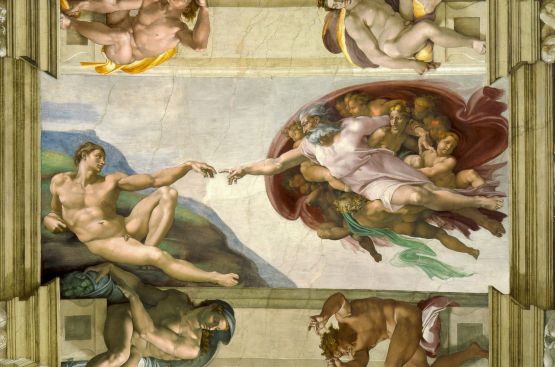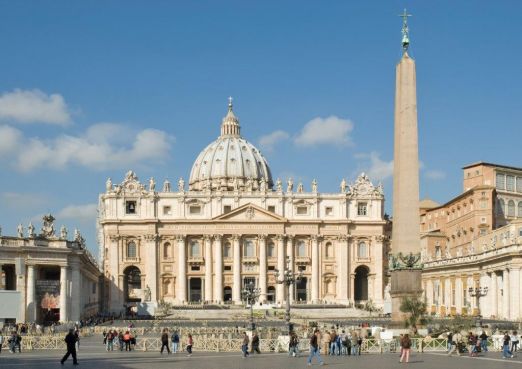Michelangelo Buonarroti, more commonly known as Michelagelo was born at Arezzo in 1475, and died in Rome, 1564
Michelangelo arrived in Rome in 1496, four years after the death of Lorenzo the Magnificent, the man who had discovered the great talents of Michelangelo when he was still only fifteen years old. Michelangelo decided to leave Florence for Rome, because he felt that Rome offered greater a broader field through which he could express his innumerable talents in many various fields of Art.
On his first visit to Rome, Michelangelo remained until 1501. During this first period he executed the magnificent Pieta carved out of white marble for St. Peters, which is discussed on our Vatican Walking Tour.
In 1505, he was back in Rome, summoned by Pope Julius II to make his tomb, which today rests in San Peters. Michelangelo himself described this project as the " tragedy of the tomb" and of his life. An endless series of rejections, changes of mind, and new designs tormented him throughout his life, leaving him deeply embittered. The tomb is located at St. Peters.
His dream and arguably his salvation was to find a harmonious fusion of the arts in a continuous flow of movements, and this found its fulfilment in the pictorial decoration of the ceiling of the Sistine Chapel. Michelangelo's greatest moment. Along with comments on the works of Botticelli, listen to fully comprehensive interpretation of the Sistine Chapel on our Small Group Vatican Walking Tours
Michelangelo's greatest gift to the skyline of Rome is the Cupola of St. Peters. A design that greatly influenced architects, and the influence of Michelangelo's cupola can be seen in numerous domes around the city executed by later Roman architects such as Borromini, Cortona and Rosati. He dedicated the dome of St. Peters to the Madonna and the people of Rome. To reach the dome be prepared for a climb up several hundred steps for views that will last a lifetime.
In the church of Santa Maria sopra Minerva, you'll find the statue of the Redeemer. Michelangelo accepted the following contract for this work "A Marble figure of Christ as large as life, naked, erect, with his arms around a cross, in an attitude that Michelangelo deems fit". Like many of the works of Michelangelo, things didn't quite work out as the artist planned. Enjoy a delightful anecdote surrounding this piece work on our Original Rome Walking Tour.
The Piazza Campidoglio, the Capitol, is where Michelangelo through the plan and execution of the square and its buildings created a stage for the magnificent pageantry of the Renaissance ceremonies, and with a consummate mastery he did not leave it empty. Representing a bridge between Ancient and Modern Rome, he placed an Equestrian statue of a Roman emperor to greet the one of his day. The giant bronze statue was executed to the design of Michelangelo by Francesco Amadori, one of his favourite pupils. In fact, Michelangelo later in his life took Amadori into his own home to care for when he was dying.









